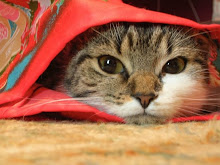 A much-better-than-average b-thriller from Australia, although it pretends to take place in Florida. Melissa George plays Jess, a single mum who takes a day away from her autistic son to go yachting with a few friends. Their boat capsizes in a storm and they are rescued by an ocean liner that has a lot more in common with the Overlook Hotel than a Carnival cruise, even including a room 237. The twists are good, and Melissa George really sells it as the central figure who may or may not be losing her mind. Good fun.
A much-better-than-average b-thriller from Australia, although it pretends to take place in Florida. Melissa George plays Jess, a single mum who takes a day away from her autistic son to go yachting with a few friends. Their boat capsizes in a storm and they are rescued by an ocean liner that has a lot more in common with the Overlook Hotel than a Carnival cruise, even including a room 237. The twists are good, and Melissa George really sells it as the central figure who may or may not be losing her mind. Good fun. This was directed by Christopher Smith, a British director who has made a few other low-budget thrillers, including Severance, and Creep. Something for me to put on my netflix queue.

























































